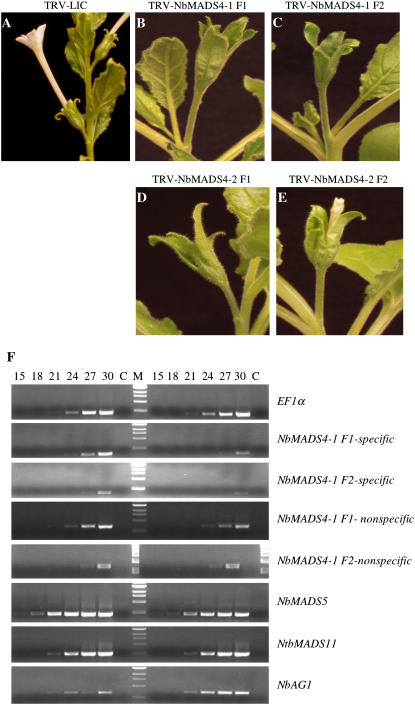Figure 5.
Silencing NbMADS4-1 and NbMADS4-2. A, Control N. benthamiana flower. B and C, Silencing NbMADS4-1 using fragment 1 (B) or fragment 2 (C) causes enlargement of sepals and the loss of large white sepals. D and E, Silencing NbMADS4-2 causes identical phenotypes to silencing with either NbMADS4-1 fragment. F, The reduction of NbMADS4-1 transcript levels was confirmed by semiquantitative RT-PCR in tissue that had been silenced with fragment 1 (row 2) or fragment 2 (row 3). The levels of NbMADS4-2 mRNA were not altered in NbMADS4-1 fragment 1 silenced plants (row 4) and NbMADS4-1 fragment 2 silenced plants (row 5). The transcript levels of the related genes NbMADS5 and NbMADS11 were also examined to confirm specificity of silencing (rows 6 and 7, respectively). The phenotypes shown are not due to the silencing of another MADS-box transcription factor NbAG1 (row 8). Lanes to the left of the marker (M) contain control tissue and those on the right contain tissue from silenced tissue. C is no RT control. Numbers at the top of each lane indicate number of PCR cycles.

